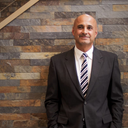I'm considering various procedures to eliminate thin, sagging skin that I'm starting to under my eyes. I had heard that lower blepharoplasty left no visible scars - that the scar is inside the lower eyelid. However, everyone having gone through it here says they now have visible scars. Can someone shed some light on this? Thanks in advance! - michelle
Answers (17)
From board-certified doctors and trusted medical professionals
Dr. Brent Moelleken, MD

Dr. Brent Moelleken, MD
Beverly Hills Plastic Surgeon
Answer
Dr. Raffy Karamanoukian, MD, FACS

Dr. Raffy Karamanoukian, MD, FACS
Board Certified Plastic Surgeon
Answer
Dr. Richard J. Bruneteau, MD

Dr. Richard J. Bruneteau, MD
Board Certified Plastic Surgeon
Answer
Dr. Lewis Albert Andres, MD

Dr. Lewis Albert Andres, MD
Board Certified Plastic Surgeon
Answer
Dr. Sepehr Egrari, MD, FACS

Dr. Sepehr Egrari, MD, FACS
Board Certified Plastic Surgeon
Answer
Dr. Darrick E. Antell, MD, FACS

Dr. Darrick E. Antell, MD, FACS
Board Certified Plastic Surgeon
Answer
Dr. Frank P. Fechner, MD

Dr. Frank P. Fechner, MD
Board Certified Facial Plastic Surgeon
Answer
Dr. Steven H. Williams, MD

Dr. Steven H. Williams, MD
Board Certified Plastic Surgeon
Answer
Dr. Otto Joseph Placik, MD

Dr. Otto Joseph Placik, MD
Board Certified Plastic Surgeon
Answer
Dr. Robert W. Sheffield, MD
Dr. Robert W. Sheffield, MD
Board Certified Plastic Surgeon
Answer
More Eyelid Surgery Questions
See all Eyelid Surgery Q&AWE SEND PRETTY
EMAILS
What’s trending? Who’s turning heads? Which TikTok myths need busting? We’ve got you. No fluff, no gatekeeping—just real talk. Get our free, unfiltered newsletter.